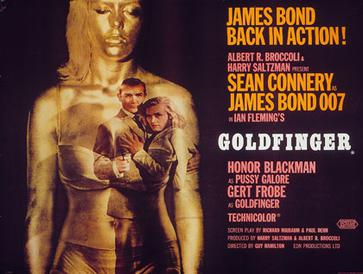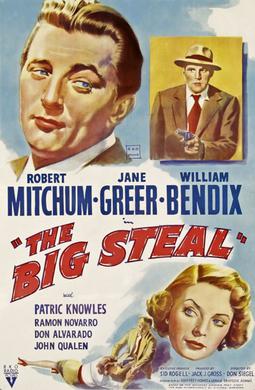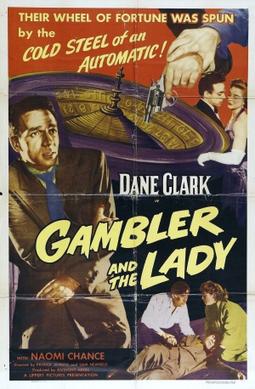On The 60th Anniversary- When The King Was “The King”-Elvis’ “Jailhouse Rock” (1957)-A Film Review
DVD Review
By Associate Film Critic Alden Riley
Jailhouse Rock, starring Elvis Presley, Judy Tyler, 1957
As I have mentioned before sometimes as an associate film critic, meaning a junior member of the staff, you receive the tail-end assignments, not the good stuff which is left to Sandy Salmon (and in the old days Sam Lowell). Sometimes you get an assignment that is something of a so-called “learning experience” like the time I mentioned to Sandy that I did not know who Janis Joplin was when he asked me what I thought of her as part of his Summer of Love, 1967 seemingly endless nostalgia trip and he assigned me to review the D.A. Pennebaker documentary on the first Monterey Pops Festival in that same year where Janis blew the house down. That was not the case with the film under review Elvis’ (do I need to print his last name for the three people in the world who do not know who I am talking about solely by using his first name) Jailhouse Rock from 1957 which played off of his huge record hit of the previous year. I practically begged Sandy for the assignment especially after Sam Lowell decided that he wanted to concentrate on finishing his also seemingly never-ending series on early 1950s B-film noirs put out by the English Hammer Production Company. Sandy demurred suggesting that like with the Janis Joplin episode I could learn something about the days when men and women (think Wanda Jackson) played rock and roll like their lives depended on it- and it and they did.
Now everybody knows, or should know since I am an associate critic and thus much younger that those reprobate rockers Sandy and Sam who were as Sam put it one time “present at the creation,” that I am at least a decade if not more removed from having been, as Sam Lowell would also put it, washed clean by the rock and roll wave that swept American youth in the mid-1950s. But that fact does not mean that unlike the Janis Joplin episode that I am unfamiliar with the work of “the King” when he was in the king in the 1950s dawning light. The link? I grew up in a rather tepid household in New Jersey anchored by staid and respectable parents, my father a civil engineer and my mother, Mildred eternally called Milly, nothing but a great and resourceful housewife as befit a professional man’s wife in those days if not now. Except that Milly was wild for Elvis back in her teenage maiden days. The days when Elvis made all the women sweat. So against staid respectable housewifely type-cast all day long on some days especially when Pa was away she would play whatever Elvis tunes hit her fancy just then. And dance to some of them to my embarrassment when I was younger since it seemed kind of provocative to me although I didn’t know what that word meant then. The long and short of it though is that love of Elvis must have been in my DNA since I have always been a fan of his early music if not the horrible films that he got talked into after Jailhouse Rock or the muted musical life of a stuffed animal Vegas head-liner. Yeah, the classic age of Good Rockin’ Tonight, It’s Alright Mama, One Night With You (better the version that has One Night of Sin to the same melody-what he might have been if he followed down that path a bit), Heartbreak Hotel, and of course the progenitor of the film under review Jailhouse Rock. The songs that when you look at YouTube versions makes you understand why he made women like my mother sweat and scream their frustrations away in their teenage fantasies.
I am sure that I had seen the film Jailhouse Rock sometime in my youth since I am sure my mother had it on some revival retro television station or we saw it at the retro-movies downtown but I was foggy about the details enough tin this watching that I soon realized that I didn’t recall much of the plotline. After viewing I had come away really wishing that Elvis had not done another movie because none compares with the snarly, sullen, youth he portrays speaking for a whole lost post-World War II generation who had been too young for that war but had immersed in the frightening Cold War night that froze the American landscape and which even I caught the tail-end of myself.
From scene one in some drunken back alley barroom when sullen, sulky construction worker Vince Everett (Elvis’ role) gets into a fight with some irate customer and winds killing him drawing two hard years in the state pen Elvis lights the screen up. Sure there were a million sullen youth out in places like La Jolla sucking up the surfboard seas, hot rodding down midnight Thunder Roads in Mill Valley, motorcycle helling with angels like Marlon Brando’s Johnny Too Bad tearing up the holy landscape with nothing going but Elvis spoke to them. Spoke to guys like Sam Lowell and Pete Markin in Podunk North Adamsville and a ton of places like that. And he would have stayed sullen and snarly forever, would have measured his sappy life by prison stretches except that jailbreak-in bought him in contact with a guy like Hunk, his bunkmate, a lifer-type jailbird who happened to have been a small something in the music industry before the inevitable woman got him thinking crazy about whiskey and blowjobs and got him a long stretch from a stinking two bit robbery.
Yeah, old Hunk was always looking for the angle, for the next best thing, saw in the kid something, saw a meal ticket and so he made Vince sign a pact with the devil, take a chance to break out of that “from hunger” world that guys like Sam, Pete, and even Sandy talk about in their poor boy working class days when they too might have taken one wrong turn too many. I know Sam has told me a million times it was a close thing with him (a couple of his brothers didn’t make it-wound up inside the pen more than outside). So sullen, surly too after a deuce in stir Vince takes the air on the outside thinking maybe he can make it as an entertainer not small potatoes like Hunk but big, with that big red convertible of his dreams.
But a million guys back then had that like a million other guys sound borrowed from Hank Williams or Big Joe Turner or Frank Sinatra, hell, guys were even borrowing styles and form from hokey Mickey Alba who knocked the women for a loop-for a minute and then they went back to sleep. No soap, no soap for Vince except maybe cadging drinks for a tune or coffee and. That is until he met record hustling insider Peggy who sets him up on the road to dough although never giving him a tumble. Never buying into that from hunger need Vince exuded since as bright as she was she was strictly suburban middle class and sullen and snarly in that milieu only played in sociology classes or in the magazines.
Vince and Peggy wash out until two things happen, happen in the small company world of records in the days before big operations like RCA and Columbia sucked all the air out of Mom and Pop operations. First Vince got told via a tape-recording that he sounded like a lonesome cowboy singing to and for himself. No feeling, no jump until Peggy blasted him. Made him jump feel the song. Second Vince figured that he still had a shot at the bigs by producing and hustling his own records and it worked. Once a Peggy-friend DJ spun his platter the girls went crazy, went Milly and fantasies crazy. The rest was history.
Well almost history since our boy Vince had a thing for Peggy but couldn’t express it, couldn’t figure a way to get to her and Hunk came out of stir looking for his cut. He got it alright and in the end Vince got Peggy too but that was a close thing. Here’s the real play though since every Hollywood production, or most anyway, have some boy meets girl conflict that must be resolves by the end or else just like here. What you want to watch this movie for and if you can’t get it go to YouTube to watch is that Elvis scene when he is doing Jailhouse Rock for a television show. Watch (forget the lip synched song) Elvis go through his paces, watch him make the moves that later guys would imitate although they couldn’t surpass. Watch what made all the young things sweat, hell, all the grown women too. Watch why my mother in her sainted sanitary home kept her girlish fantasies alive listening to the king when he was the king do his stuff. Yeah, watch when men (and women too) played rock and roll for keeps.






